You want to protect the environment?
With vegetable cat litter you make a sustainable contribution and protect our ecosystem.
The topic of sustainability has become a hot topic. We are confronted with it everywhere in our everyday lives. It’s about time! Now that more and more people are taking to the barricades against mountains of rubbish and polluted oceans, a rethink is taking place. “Okay – but what does my cat litter have to do with it?” you think to yourself. Many cat owners simply don’t realise that their litter is an important factor.You can find out how here!
What types of cat litter are there?
The cat litter types are as different as the preferences of the furry noses and their humans. Cat litter types can be divided according to certain criteria: on the basis of the raw materials used, the functionality, the consistency or whether the litter has additives. Cat litter in comparison – what actually makes the difference? Here let’s take a close look at all of them!
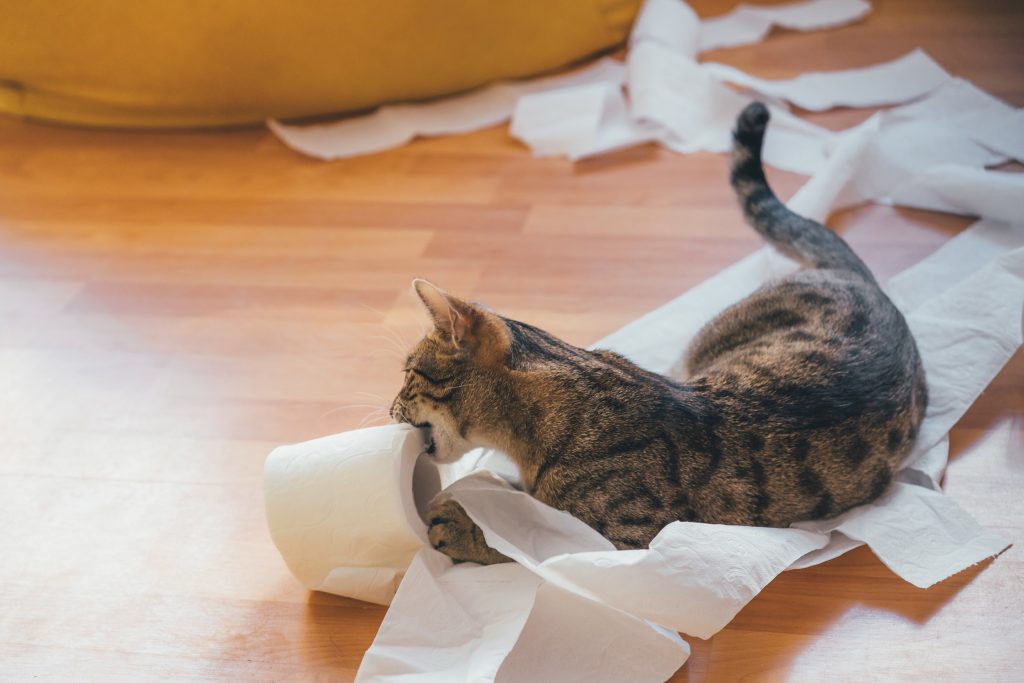
Why mineral cat litter harms the environment
Many cat fans are of the opinion that they are buying a natural product with mineral litter based on bentonite, clay, calcareous sandstone or silicate. In the case of bentonite, for example, manufacturers speak of “natural clay” or similar. Of course you think that mineral cat litter is a natural and environmentally friendly product. Wrong! Either the mining, production or disposal of this litter is harmful to the environment.
How is conventional cat litter made?
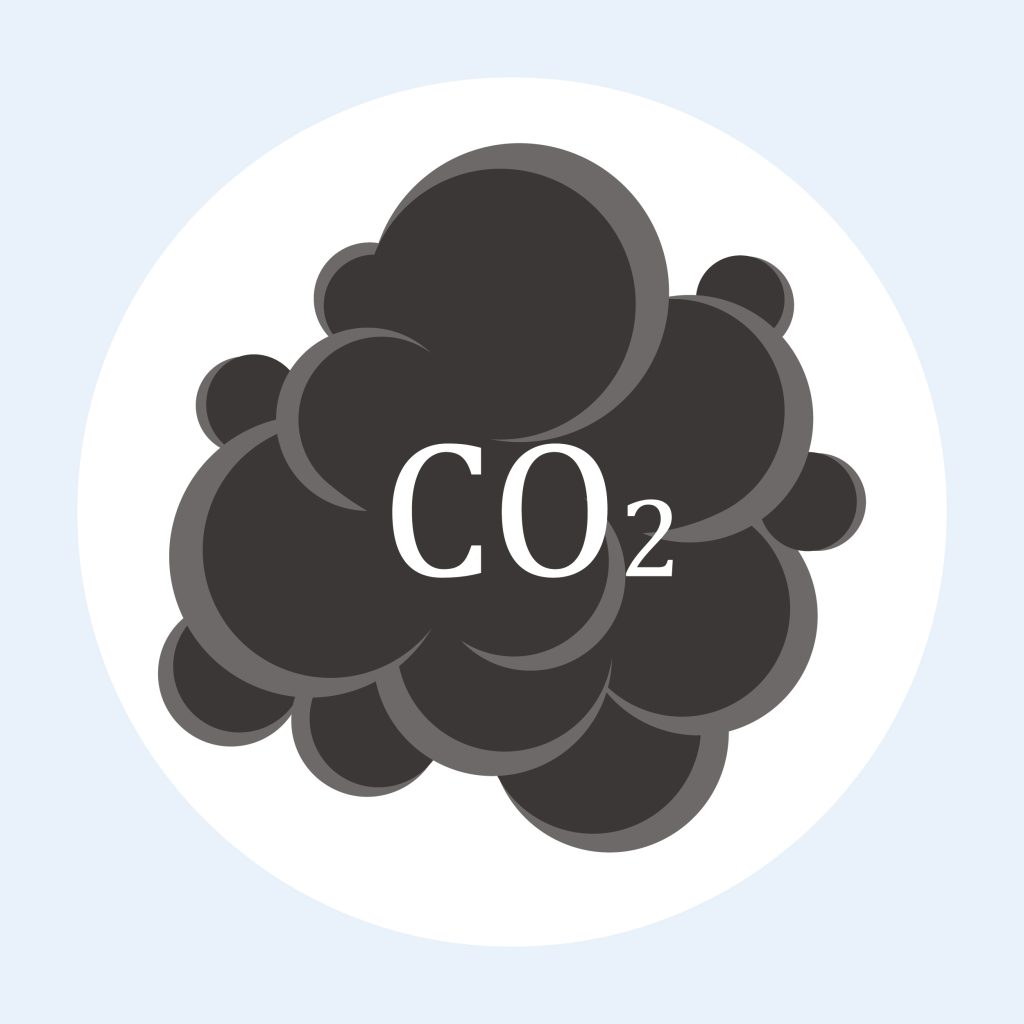
Conventional litter is made from non-renewable raw materials. Bentonite deposits are limited. Huge holes are torn in the landscape in open-cast mines to extract it. Silicate is produced cheaply in chemical processes in Asia. During processing, transport and waste disposal after use in the litter box, huge amounts of environmentally harmful CO2 are released.
How is mineral cat litter disposed of?
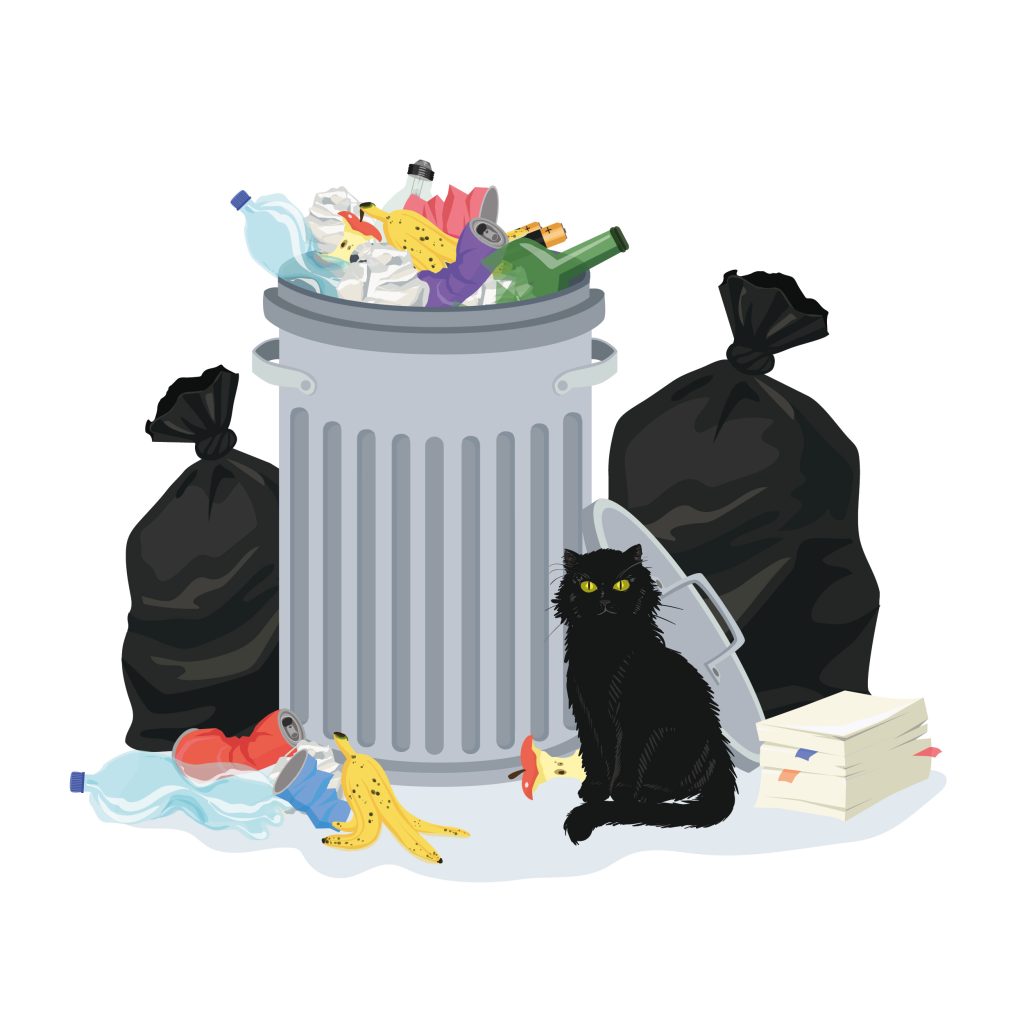
The disposal of mineral cat litter is also problematic, as it cannot be recycled after use: It inevitably ends up in the residual waste. It then goes to incineration and landfill. In addition to the negative side effects such as extreme odour nuisance and renewed lugging, the cat household may also have to pay higher refuse charges.
How much cat litter waste does a cat household produce per year?
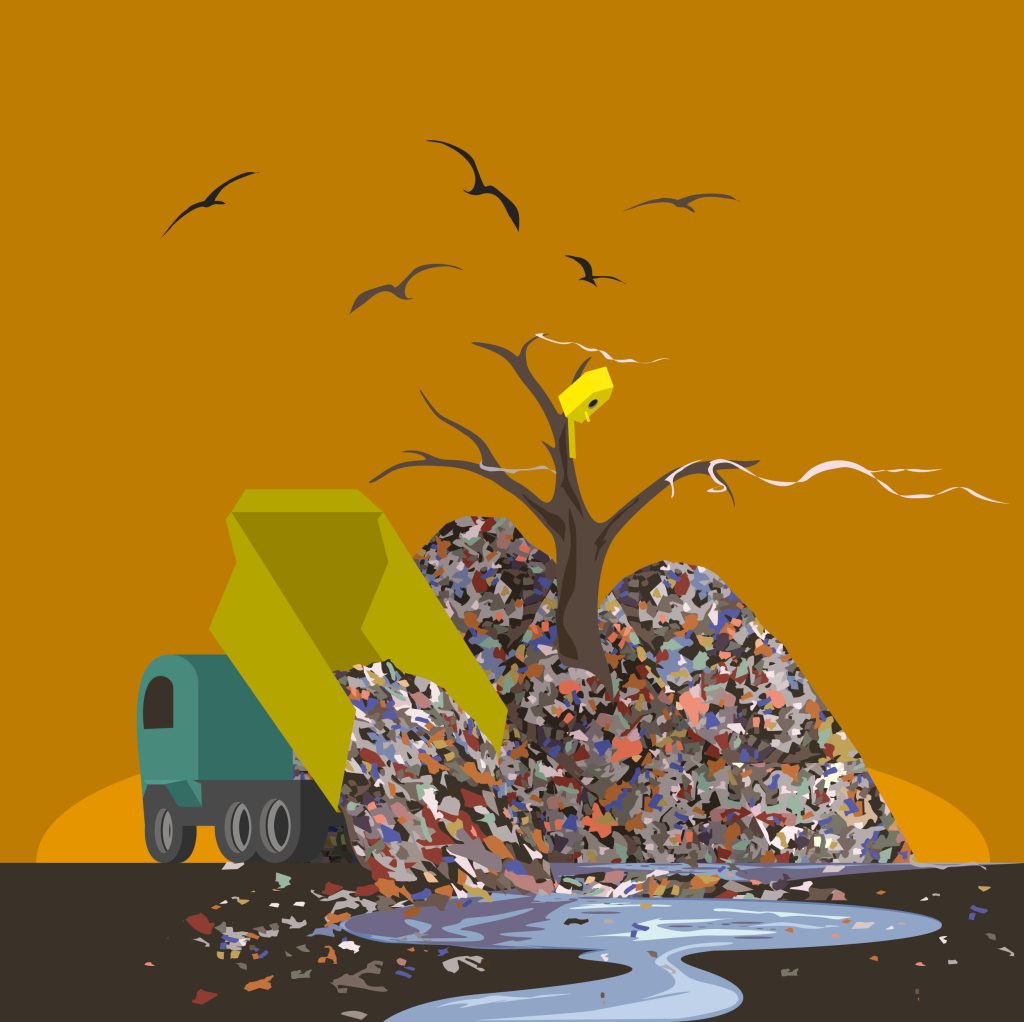
There are now 16.7 million cats living in German households. Since 8 out of 10 cat owners still use conventional litter, 84% of the litter is of mineral origin. A cat household with a cat weighing 3.5 kg uses about 270 kg of cat litter per year – summa summarum: 630,000 tonnes of cat litter waste every year! A huge cat litter waste mountain, isn’t it? And it grows and grows…
Quelle: Plant Litter Association (2021): „Nachhaltig streuen!“, online Cats for Future – nachhaltig streuen, 23.05.2022
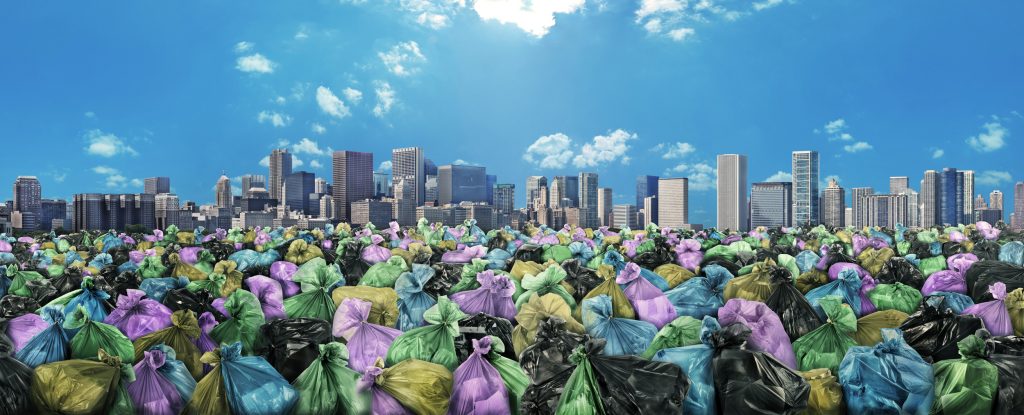
Vegetable cat litter as a sustainable alternative
Is there no alternative that puts an end to this? A sustainable cat litter that works perfectly and still enables a natural cycle of materials? Yes, there is: Vegetable cat litter! The raw materials of vegetable cat litter all have a purely vegetable origin. They grow again and thus help to conserve valuable resources. A biological give and take: Natural cat litter is a natural part of the circular economy.
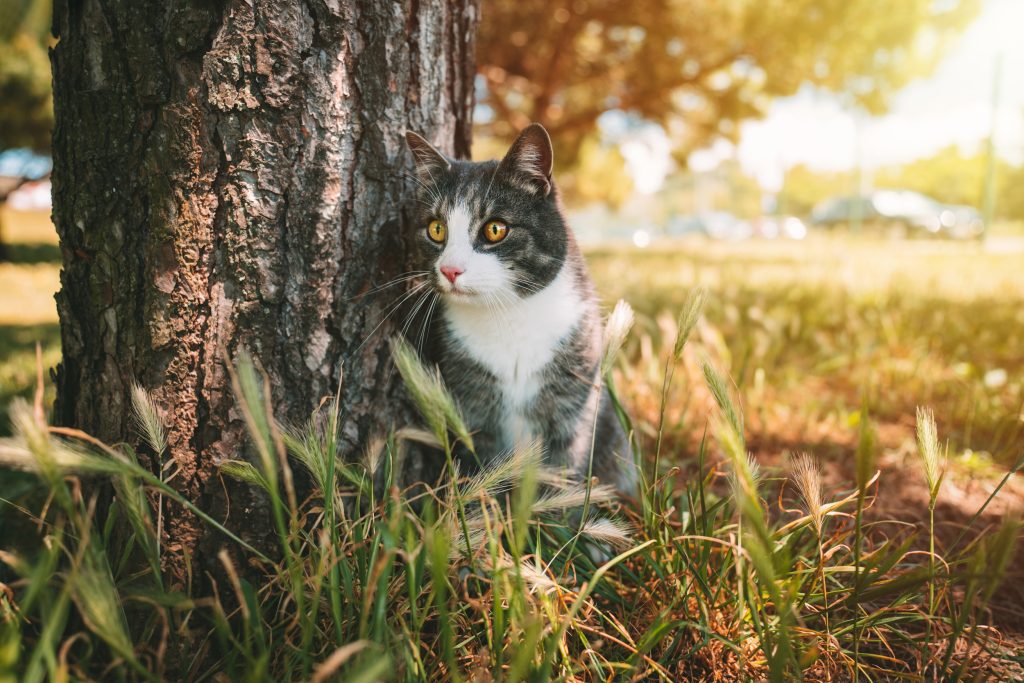
How is vegetable cat litter made?
Vegetable cat litter is made exclusively from secondary raw materials. These organic raw materials originally come from agricultural and forestry production. However, no trees are felled or food destroyed for the production of natural cat litter! Only those raw materials are used that are a by-product of the production process anyway: This conserves resources!
Vegetable cat litter made from renewable raw materials
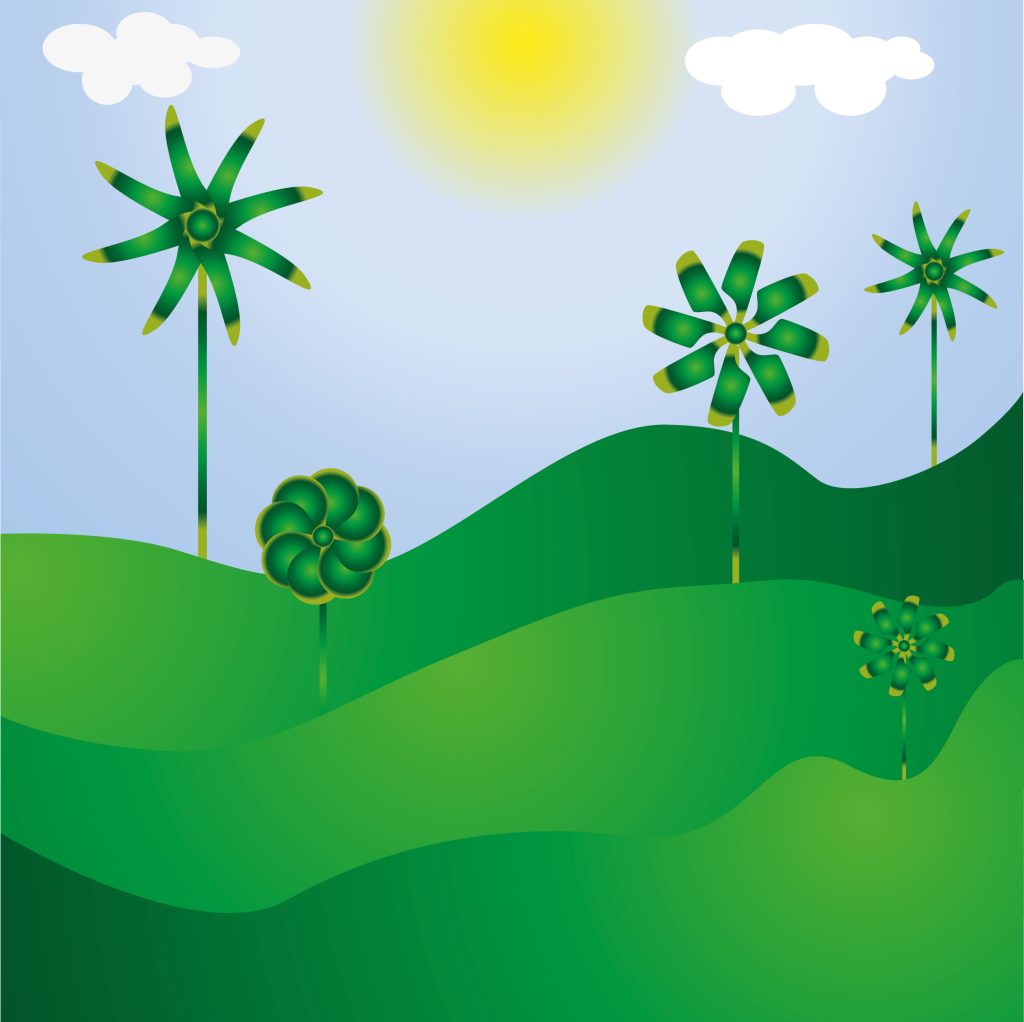
Vegetable cat litter is made from renewable raw materials. Why is this good for the environment? At the moment, we humans consume more resources than our ecosystem can restore. And these resources are becoming increasingly scarce. It’s high time to pull the lever and use only natural raw materials. After all, they grow again.
CO2 savings in the supply chains

Unlike mineral litter, which comes to us from faraway countries – for example Turkey, Senegal, Canada or Spain – plant-based raw materials travel short distances. Mineral litter is dried with great energy expenditure and then transported over thousands of kilometres to the places where it is sold. Vegetable raw materials are grown regionally and mechanically processed on site. This saves a lot of CO2!
How is vegetable cat litter disposed of?
If you value comfortable handling, want to protect the environment and really save money, you should not use mineral cat litter, but a purely vegetable cat litter. Because a natural cat litter can be used in several ways can be returned to the natural material cycle and disposed of in an environmentally friendly, cost-saving and odourless manner.
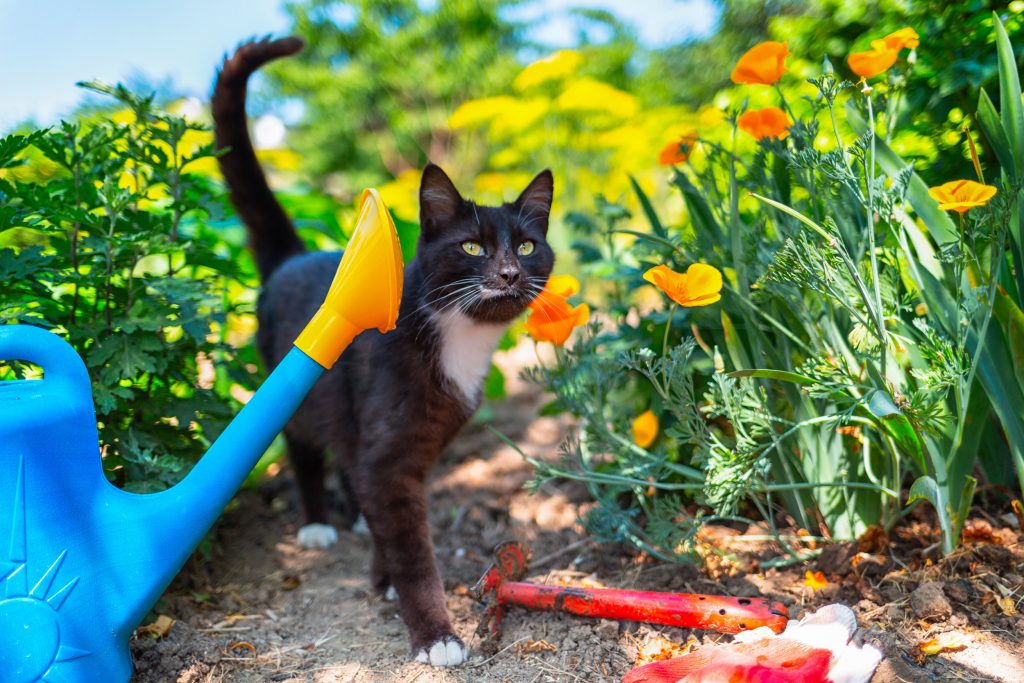
Dispose of cat litter in the compost
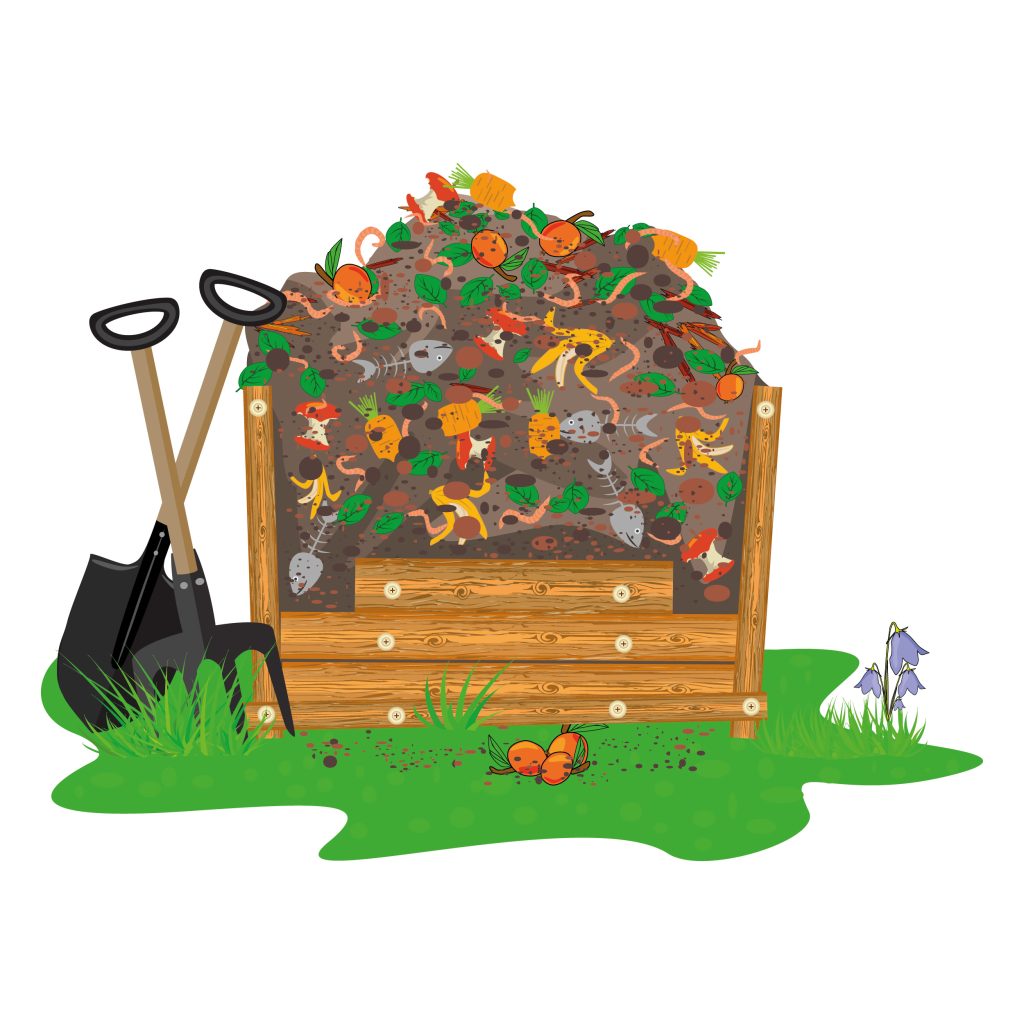
Plant-based cat litter decomposes completely through natural decomposition processes – it is compostable – so it can be a valuable fertiliser that promotes soil life in the garden and ensures fresh flowers. The cat excrement itself should only be disposed of in the residual waste. And if the litter is contaminated, it is of course not suitable for the vegetable patch.
Dispose of cat litter in the organic waste bin
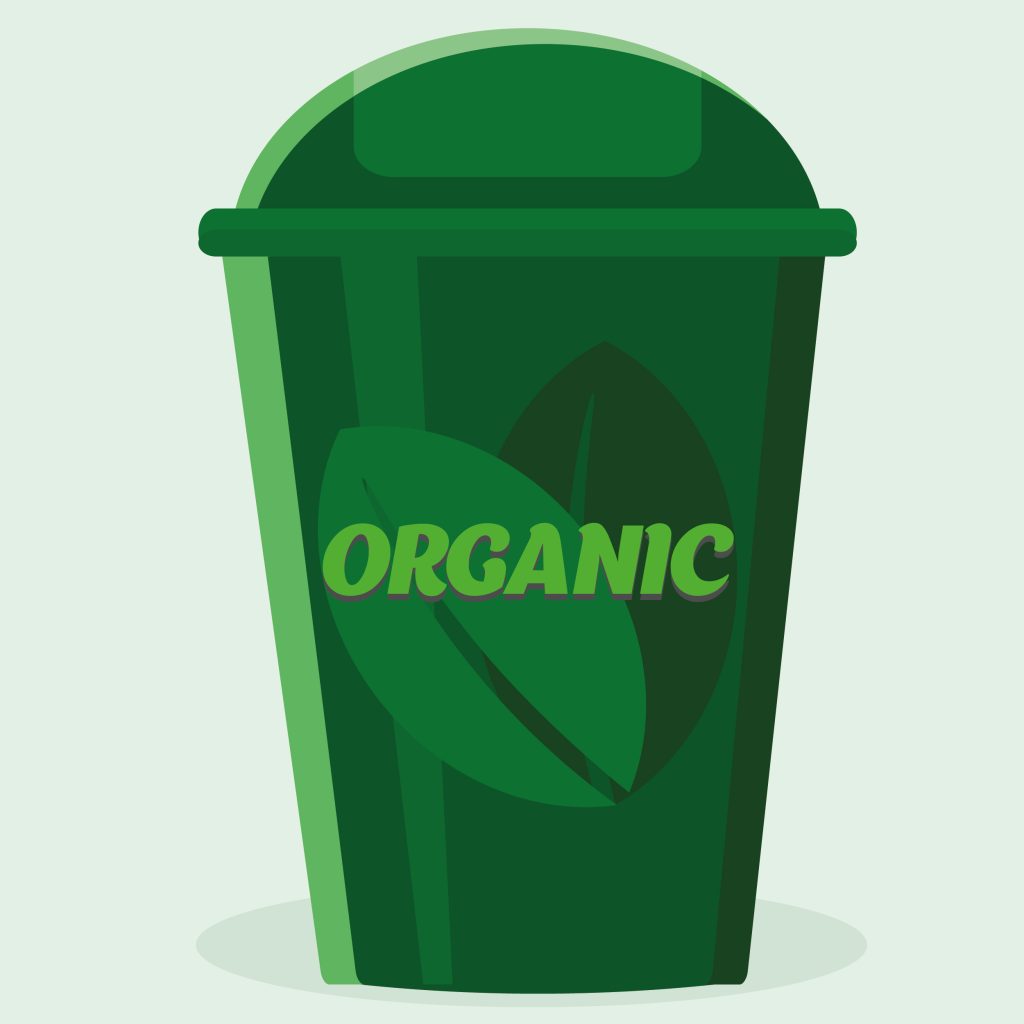
The disposal of natural cat litter in the organic waste bin is regulated at Land level in Germany. The contents of the organic waste bin are industrially composted or methanised. In composting, several Länder do not yet tolerate litter products. However, the European directive on the recycling of organic waste will provide more clarity here in the next few years.
Disposing of cat litter in the toilet
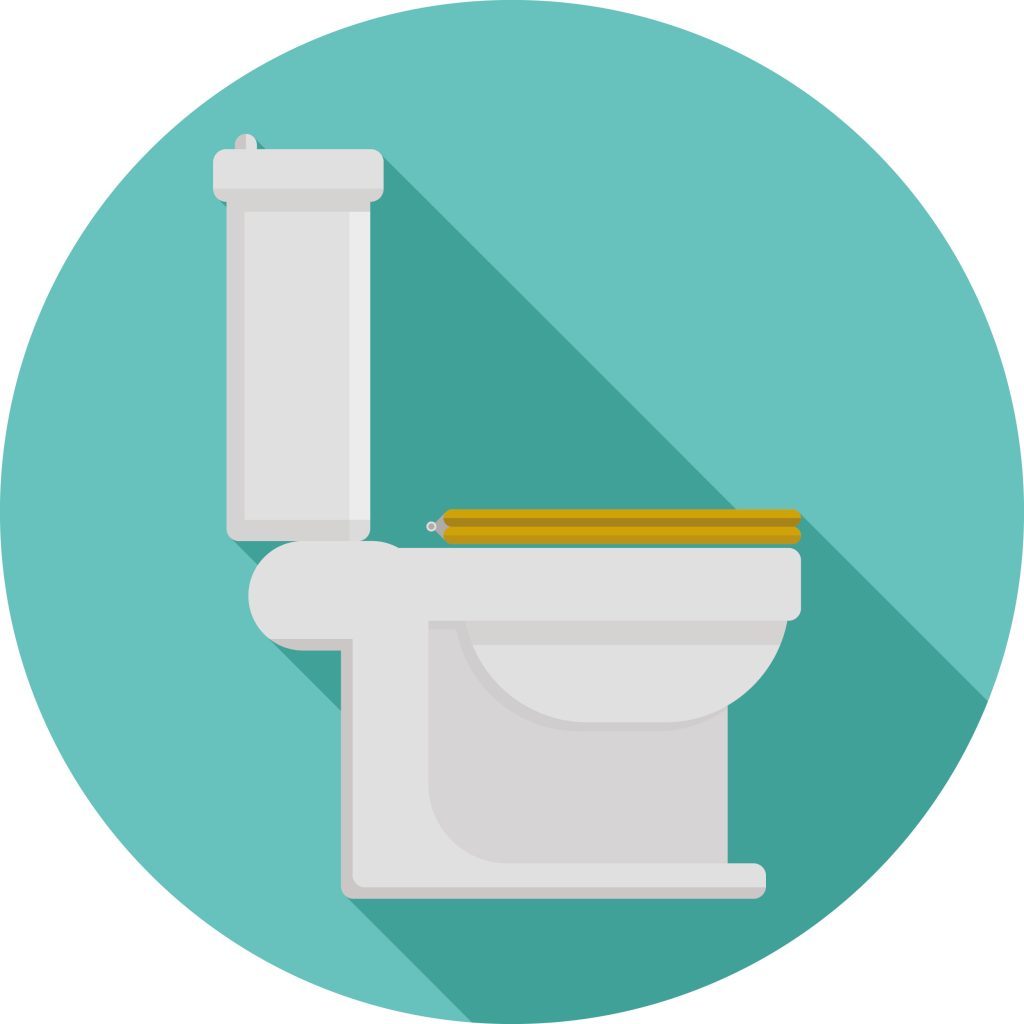
Disposing of vegetable cat litter in the toilet? – Won’t it clog the toilet? If permitted by local regulations, individual lumps that form after the cat has gone to the toilet can certainly be disposed of in the household toilet. This is because they dissolve immediately and completely when they come into contact with water, so that the toilet cannot become blocked.
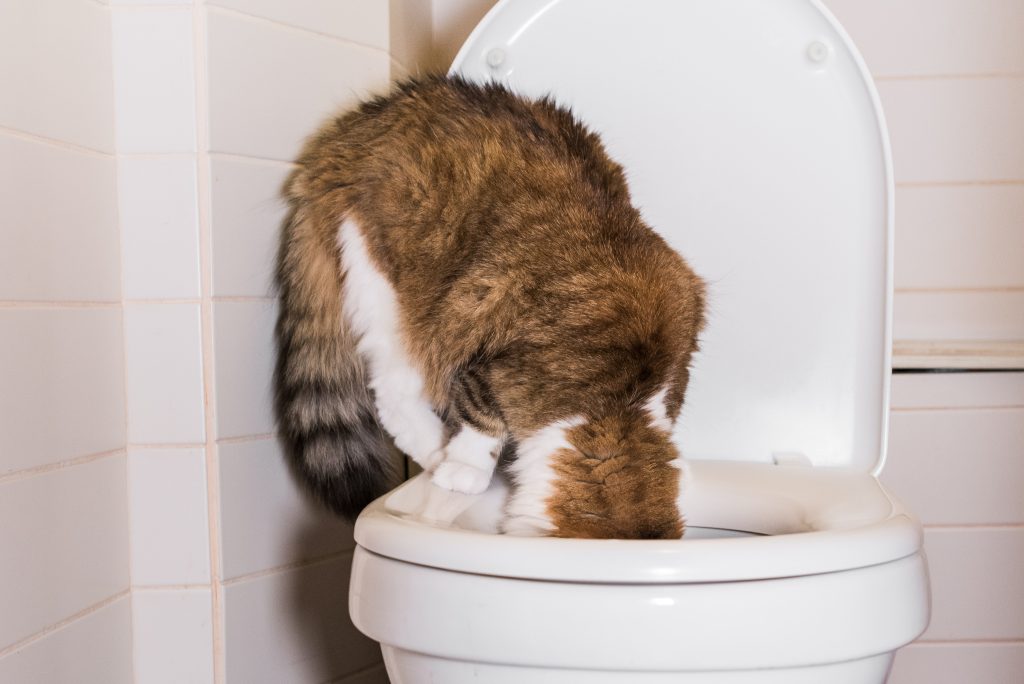
Raw material recovery through biodegradable cat litter
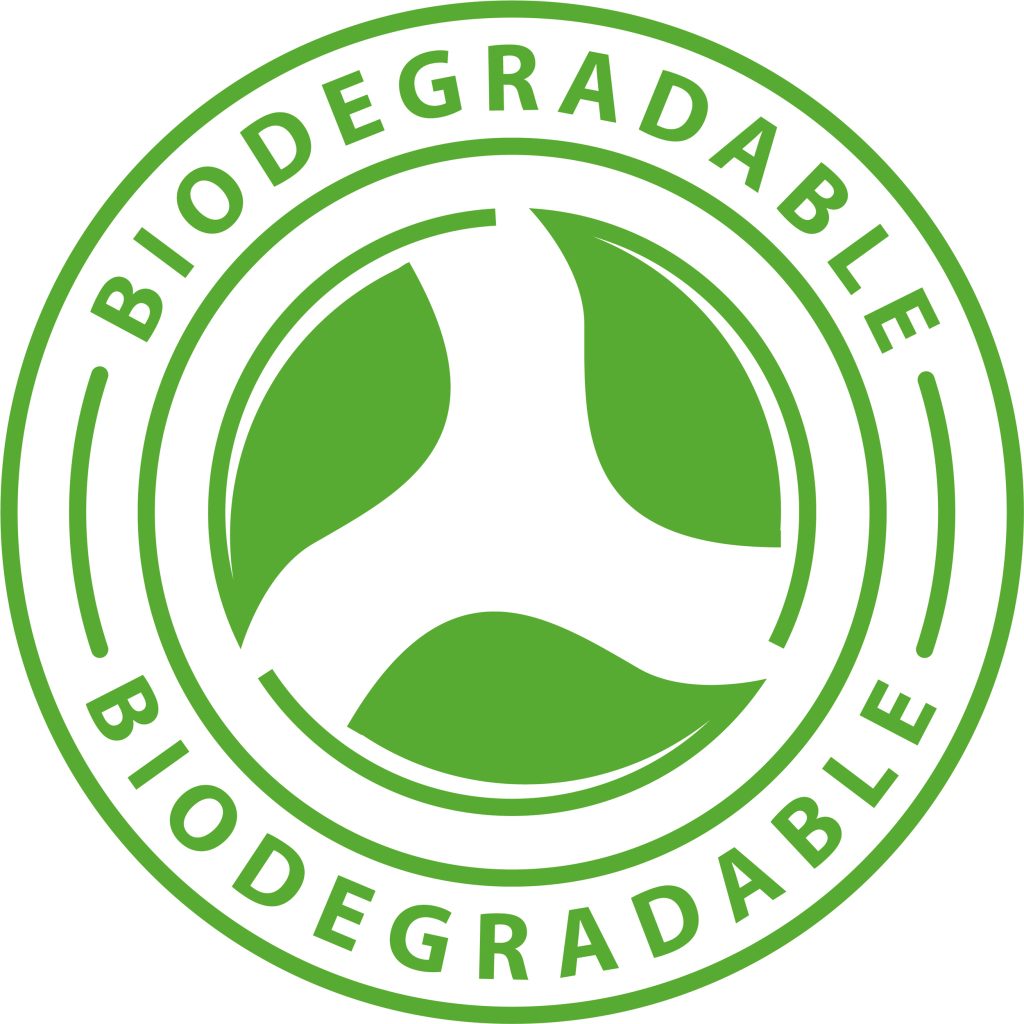
Not only conserving resources, but also recovering raw materials? While mineral litter always ends up in landfill, the raw materials of biodegradable natural cat litter can be recycled after use. Even as waste, they still make a valuable contribution: through methanisation and composting, “cat waste” can ultimately be turned into biogas or fertiliser!
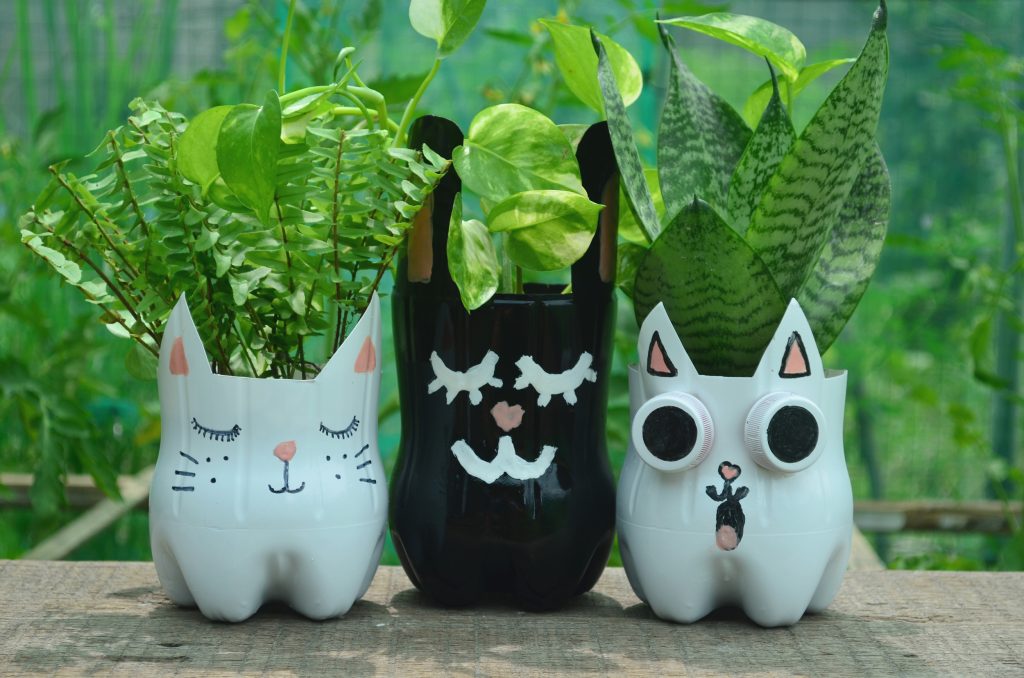
Produce less waste with natural cat litter
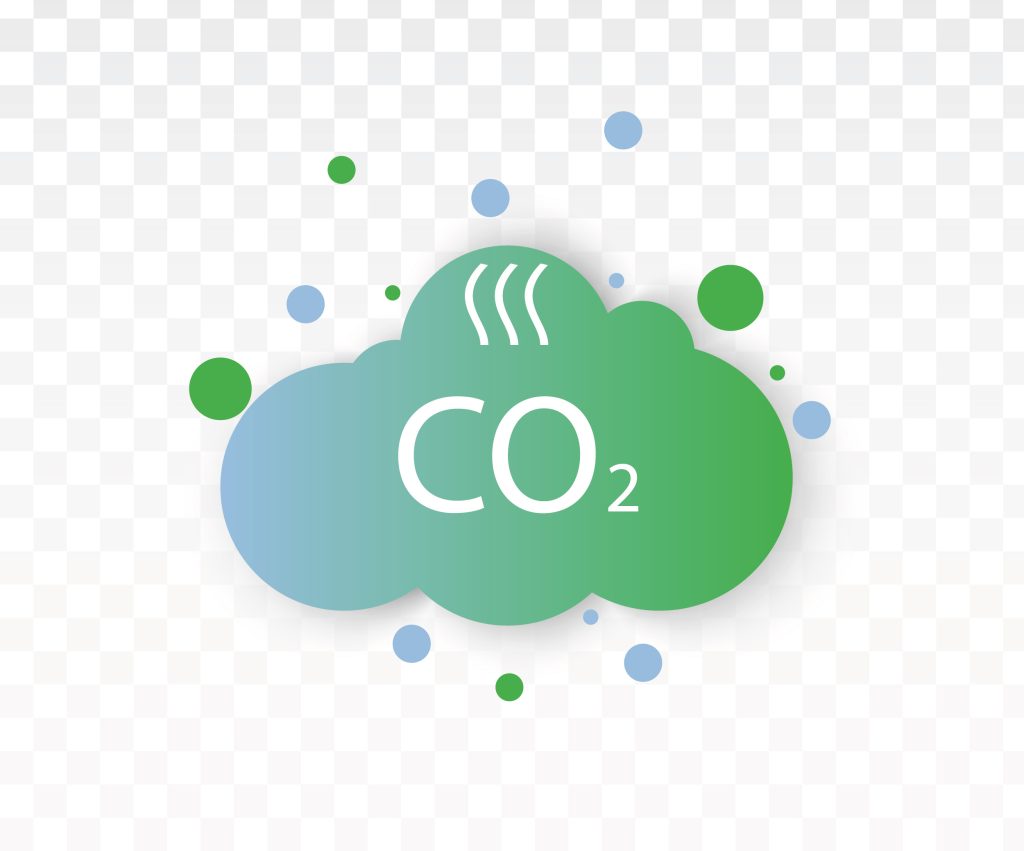
Vegetable cat litter has less mass, it weighs 50% less and at the same time is much more efficient than mineral litter. By effectively binding liquids and odours, natural cat litter can reduce waste volume by up to 90%. A cat household that switches to natural cat litter does not need 270 kg of litter, it easily gets by with 64 kg of litter: Less waste + CO2 emission!
Source: Plant Litter Association (2021): „Nachhaltige Streu schont auf natürliche Weise Ressourcen und Umwelt“, online Nachhaltige Katzenstreu – catsforfuture.de, 23.05.2022
Sustainable natural cat litter from Cat’s Best®
As a cat litter that combines nature & hi-tech, Cat’s Best is the first cat litter of its kind. Because in addition to the natural ingredients, Cat’s Best® contains a lot of plant fibre technology that enables this litter to absorb and encapsulate up to 7 times its own weight in urine, completely naturally, lightning fast and reliably down to the last droplet! This prevents odours from developing in the first place. And going to the toilet becomes a forest-like, pleasant experience for the cat. A clean matter for animals, humans – and also the environment, because Cat’s Best® is sustainable and completely biodegradable.
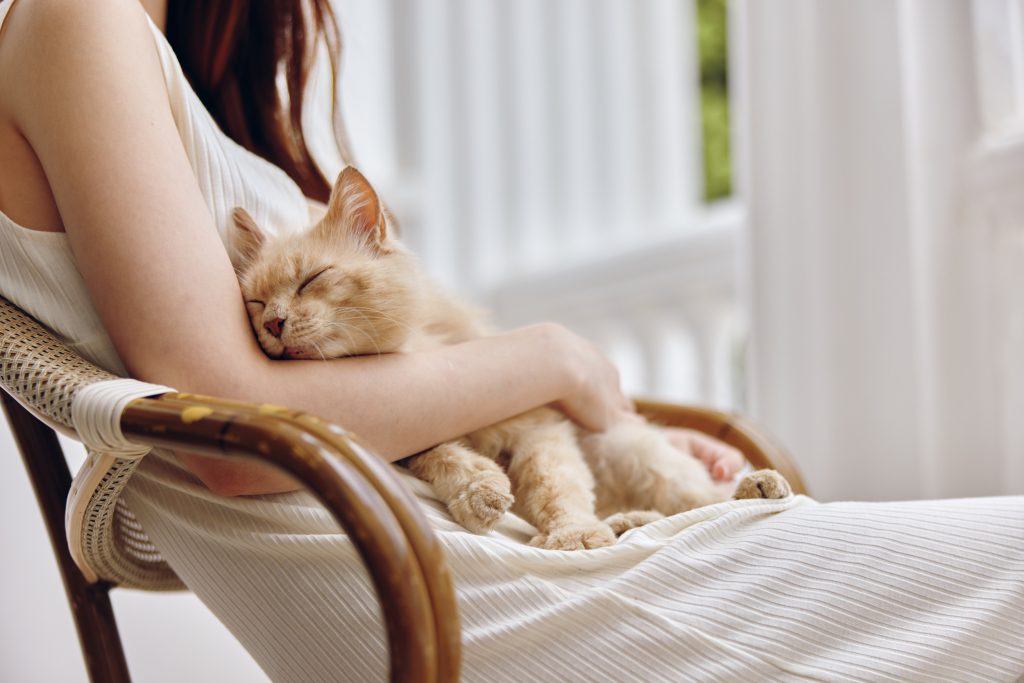
FAQs Sustainable cat litter
If a substance can be decomposed by bacteria, fungi, algae or protozoa, it is considered biodegradable. Plant fibre cat litter made from organic raw materials is biodegradable because these materials can be broken down bymicroorganisms into simpler substances. Conventional litter is made from non-renewable raw materials. After use, it cannot be recycled further: It always ends up in the residual waste.
If permitted by local regulations, individual lumps of natural cat litter can be disposed of in the toilet after use. Mineral litter cannot be disposed of in the household toilet. Instead, with conventional litter, in addition to the negative side effects such as odour nuisance and renewed lugging, there may also be increased waste disposal charges when disposal is due.
Environmentally friendly is a natural cat litter that makes a natural material cycle possible, for example Cat’s Best®. This cat litter is completely sustainable: no trees are felled for Cat’s Best®, because Cat’s Best® is only made from PEFC-certified secondary wood raw materials. And Cat’s Best® protects the environment. Because while mineral litter inevitably ends up in landfill, Cat’s Best® is biodegradable.
A cat litter is sustainable if the raw materials it is made of are renewable and help to conserve resources. Natural cat litter is therefore a natural part of the circular economy. Cat litter made from plant fibres, such as Cat’s Best®, is obtained in ecological forestry: No tree plantations, but grown forests from sustainable forestry. Disposal is also circular: the material is biodegradable and thus in the end also best kept in the compost or the organic waste bin.
In principle, all cat litter can be disposed of with household waste. However, depending on the volume and weight, this will incur considerable costs. Mineral litter must always be disposed of with household waste, i.e. residual waste. Vegetable cat litter can be disposed of in several ways, for example via the compost, the organic waste bin or the household toilet: less waste really saves money and protects our environment.
Organic waste is valuable: garden and plant waste, kitchen waste and other organic waste therefore belong in the organic waste bin. This waste can then be recycled into biogas or fertiliser and be of further use to us. Mineral litter must not go into the organic waste bin, this litter must go into the residual waste bin, then into incineration and landfill. Organic cat litter can go in the organic waste bin. However, the disposal of cat litter in the organic waste bin is still regulated very differently at Länder level in Germany.
Cat litter types can be divided according to certain criteria: on the basis of the raw materials used, on the functionality, on the consistency or on whether the litter has additives or not.
Mineral litter is made from non-renewable raw materials that only occur in limited quantities. During extraction, processing, transport and disposal, huge amounts of environmentally harmful CO2 are released. Vegetable cat litter is made from renewable raw materials, weighs 50% less and is more efficient than mineral litter. With organic cat litter, the volume of waste can be reduced by up to 90%: A cat household needs only 64 kg of natural cat litter instead of 270 kg: Much less waste + CO2!
Source: Plant Litter Association (2021): „Nachhaltige Streu schont auf natürliche Weise Ressourcen und Umwelt“, online Nachhaltige Katzenstreu – catsforfuture.de, 23.05.2022
Cat’s Best® cat litter consists of plant fibres. The raw material of Cat’s Best® consists of 100% natural softwood fibres from spruces, firs, pines or Douglas firs. However, no trees are felled to obtain the natural, renewable plant raw materials. Cat’s Best® cat litter is made exclusively from PEFC-certified secondary wood raw materials from the wood industry, which are processed and recycled in a resource-saving way.
You can buy sustainable cat litter everywhere these days: Specialist retailers (chains, independent retailers, online platforms), garden centres and DIY stores, and general food retailers with their different types of shops and distribution models (hypermarkets, supermarkets, city markets, hard & soft discounters).
Mineral cat litter is extracted in open-cast mining, silicate is produced in chemical processes. The organic secondary raw materials for vegetable cat litter come from the wood industry and agriculture. In contrast to mineral litter, the plant-based raw materials only cover short distances. While mineral litter is dried with great energy expenditure and transported over thousands of kilometres to the places where it is sold, natural materials are grown regionally and processed directly on site.

